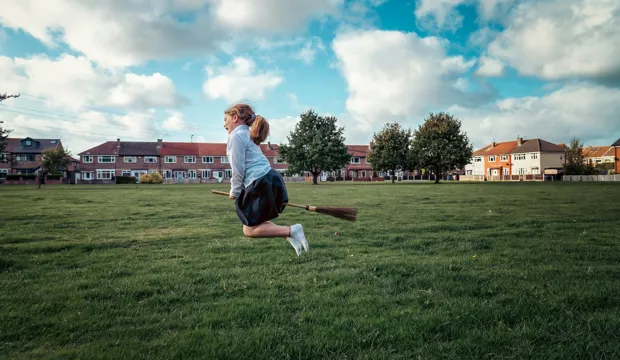
Make a dancing skeleton
This resource focuses on the names and movement of the bones in the human body.
With our science KS2 lesson plan teaching resource, learners will work out the names of the main bones within the human body and then using their knowledge of these bones to complete the activity.
In this classroom project learners will learn about the movement of the bones in the human body. They will then make their own dancing skeleton from card. Finally, they will test their skeleton and observe how it works.
This teaching resource activity could be used as a main lesson activity to teach learners about human anatomy. It could also be used as part of a wider scheme of learning focussing on the human body, mechanisms and movements, or designing and making products within a Halloween-themed context, alongside other IET Halloween themed resources.
We’ve created this teaching resource science activity to support the delivery of key topics within science.
Activity: Making a dancing skeleton with movable arms and legs
Learners will make use of the theme of Halloween to learn all about the skeleton – what it is, it’s function and importance within the human body.
Tools/supplies needed:
Resources required:
- Scissors
- Card or cardboard
- Glue
- Paper fasteners
- String
- Drinking straws
- Tape
- Eraser or ball of sticky tack
- Optional: thin wood/bamboo skewers with the points removed
Follow our step-by-step guide to make a dancing skeleton
Step 1 – Cut out the skeleton parts
- Carefully cut along all the solid outlines
- Glue onto card or cardboard
- When the glue is dry, cut out the cardboard
Step 2 – Make the holes
- Put an eraser (or a ball of sticky tack or thick card) behind the hole, then push a sharp pencil in to make a hole for the paper fastener.
- Repeat for all 12 holes!
Step 3 – Connect the skeleton
- Add joints to the skeleton with the paper fasteners
- A joint is where two bones meet, but move
- These make it move like your body does
Step 4 – Add straws
- Cut straws that are slightly shorter than each arm, leg and the chest
- Cut three short straws to attach to the pelvis and head
- Tape the straws to the back of each bone as shown - leave a small gap between each straw
Hints:
- Be careful not to crush the straws.
- Make sure the sticky tape does not cover the end of the straw.
Step 5 – Secure the feet
- Attach a piece of string to the base of each foot using sticky tape
Step 6 – Thread it through
- Thread the string through the straws for the legs, pelvis, spine and head
- Leave a length to pull on at the top
Step 7 – Make it move
- Attach string to the hands, hips and spine using sticky tape
- Thread the string through the straws above it and out of the head
- Leave a length to pull on at the top
Step 8 – Dance!
- Pull the strings individually or together
- Experiment with your dancing skeleton
Extension
- Can you add linkages to make the body move differently? Or make more than one limb move at the same time?
- Can you make the arms and legs bend at the elbows and knees?
The Engineering Context
Understanding about how something works helps engineers understand how to improve it. It can also give inspiration for other products or objects.
Learning how the human body works and moves can help Engineers to transfer this into other objects, such as walking robots or prosthetic limbs.
Suggested learning outcomes
This resource combines Science, Design and Technology and Engineering, with the aim that the learners will be able to know what is meant by a skeleton, be able to name and locate major bones in the human body and be able to make a model of a skeleton using graphics materials.
Download our activity sheet and other teaching resources
All classroom activity sheets and supporting teaching resources are free to download, and all the documents are fully editable, so you can tailor them to your students’ and your schools’ needs.
The activity sheet includes teachers’ notes, useful web links, and links (where appropriate) to the national curriculum in each of the four devolved nations; England, Northern Ireland, Scotland and Wales.
You can download our step-by-step instructions below as a classroom lesson plan and PowerPoint presentation.
Please do share your highlights with us @IETeducation.






